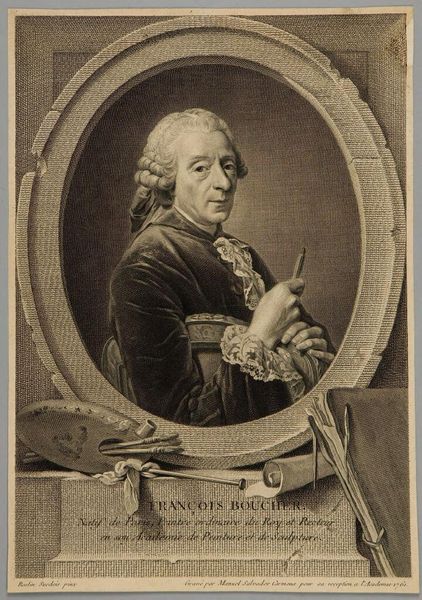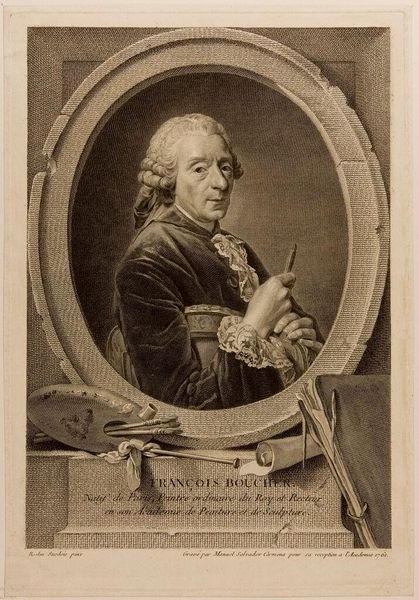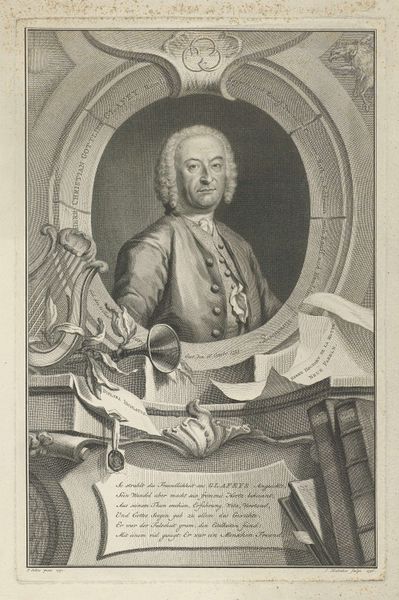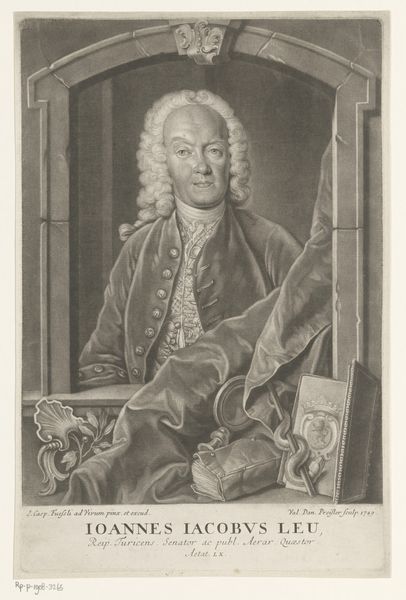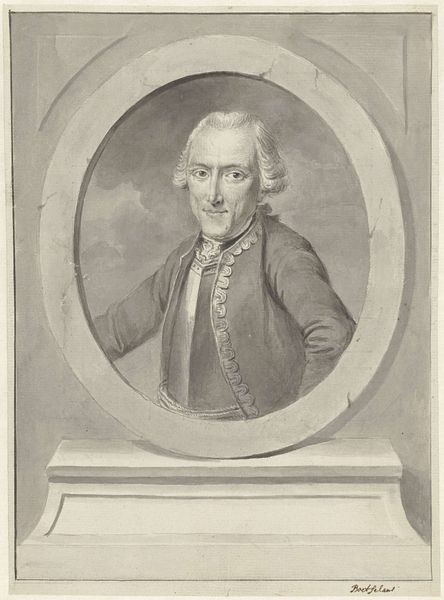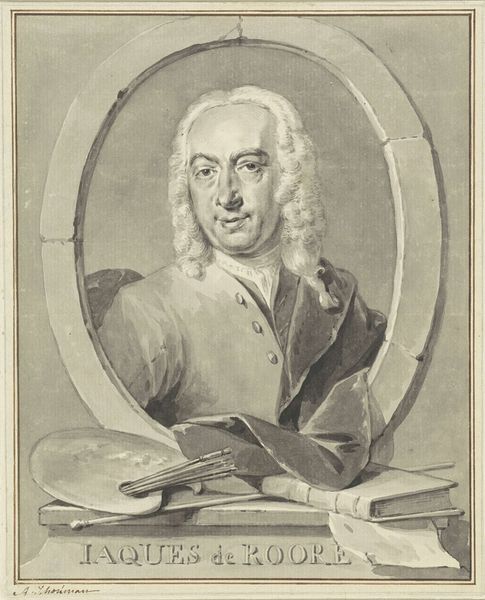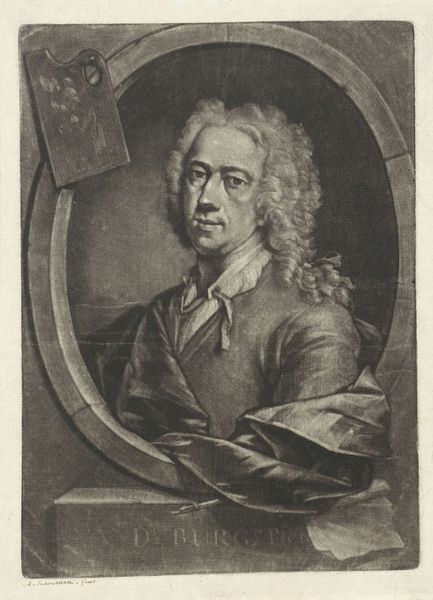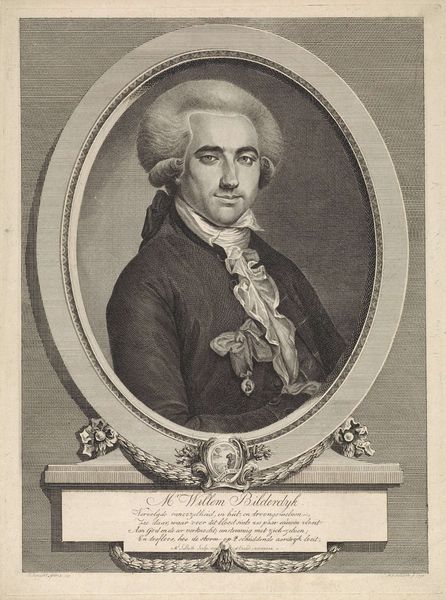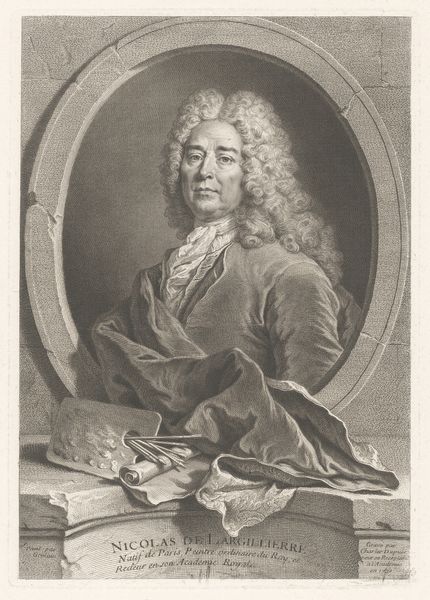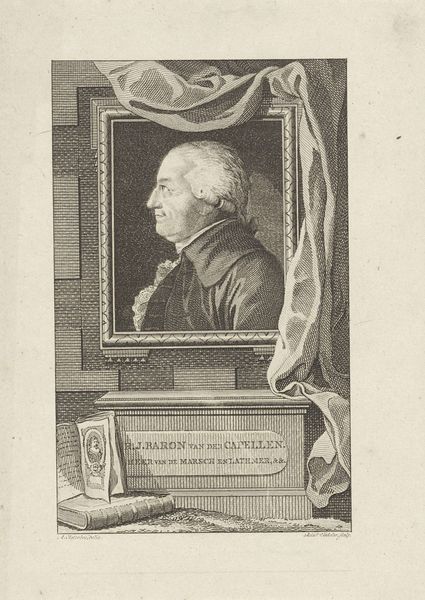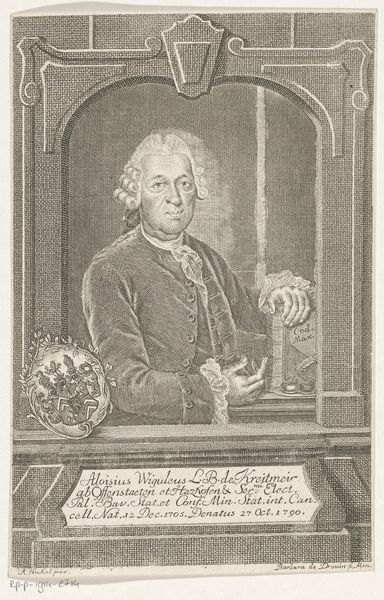
Copyright: National Gallery of Art: CC0 1.0
Editor: Here we have a print of François Boucher, engraved by Manuel Salvador Carmona in 1761. There’s a real sense of composed confidence in the sitter, framed so deliberately within that oval. What stands out to you? Curator: What strikes me is how this image, on the surface a simple portrait, is in fact deeply embedded within the complex socio-political dynamics of its time. The Rococo style, so evident here in the flourishes and delicate details, was not merely a decorative choice. It was intertwined with the aristocracy, with power. Editor: In what ways? Curator: Think about it: Boucher was a favorite of Madame de Pompadour, a powerful woman at court. His art, and therefore this very portrait of him, reflects and reinforces a certain social order. This wasn’t just about beauty, it was about legitimizing a system of privilege. Can we separate artistic skill from its use? Editor: That’s a difficult question. Is there an intentionality behind these kinds of portraits, a consciously manipulative element? Curator: Intention is a slippery concept, but consider this portrait’s function: to present Boucher in a certain light, as refined, intellectual, and unquestionably worthy of his position. That image serves to maintain his status. Think of how that compares to images circulating today, who gets portrayed and why? Editor: So we should be thinking critically not only about the artistic merit, but also about the power structures at play. Curator: Exactly! Understanding those power dynamics, those biases that shaped the artwork, allows us a far richer and, frankly, more truthful interpretation. Editor: I’ll never look at a Rococo portrait the same way again.
Comments
No comments
Be the first to comment and join the conversation on the ultimate creative platform.
